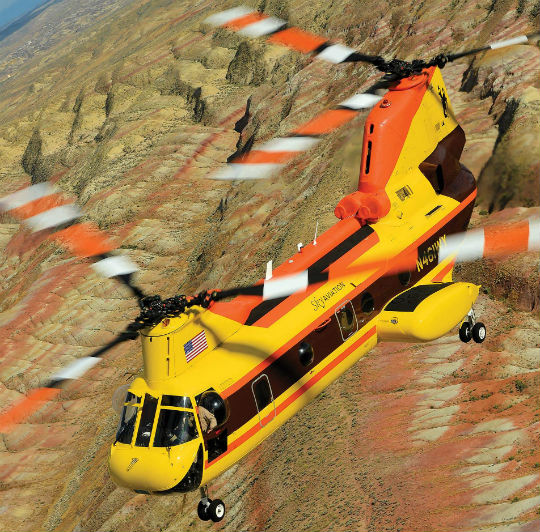
Sky Aviation’s first Boeing-Vertol CH-46E
After half a century of continuous service, the Boeing-Vertol CH-46 Helicopter finally retired from the United States Marine Corps earlier this year, and as it did so, like many other veterans from the Armed Forces, it took its first steps in a new life in the civilian world.
The storied tandem rotor aircraft — commonly known as the “Phrog” by its crews — had a long run with the United States Navy (from which it retired in 2002), where it served as a multi-mission workhorse; while for Marines, it was primarily a troop carrying assault aircraft. In addition to this, it flew as a search-and-rescue aircraft at many bases around the world, and is credited with saving the lives of countless service personnel and civilians. The CH-46 also performed as a support aircraft for several U.S. presidents through Marine Helicopter Squadron One (HMX-1).
Tens of thousands of Marine Corps pilots and flight crews flew the CH-46 over the last five decades, creating a great love for its capabilities and ability to bring service personnel home from war. But all good things must come to an end.
Today, a couple of hundred ex-Marine Corps CH-46s sit in the desert outside Tucson, Ariz., on Davis-Monthan Air Force Base (AFB) at the Air Force Materiel Command’s 309th Aerospace Maintenance and Regeneration Group (AMARG), among almost 5,000 other retired aircraft. Commonly known as “The Boneyard,” it’s the world’s largest aircraft storage facility — and the airframes that arrive there are either kept for possible future use, cannibalized for parts, or auctioned off to the public. In early 2014, the fate of at least some of the Phrogs was revealed, as four CH-46Es were put up for auction by the General Services Administration (GSA).

Tom Woodward and Bob Hawkins took the risk of purchasing the CH-46Es with a view to putting them into civilian service. Brandon Yule Photo
Tom Woodward and Bob Hawkins, the owner and vice president, respectively, of Worland, Wyo.-based Sky Aviation, had been interested in adding heavy lift helicopters to the company’s mixed fleet of fixed- and rotary-wing aircraft for over 15 years. Its fixed-wing aircraft are used for aerial survey and agricultural work; while its helicopters, which include the Bell UH-1H Huey, 206 L4 and L3 LongRangers, and 206 B3 JetRanger, fly a variety of missions, including firefighting, game survey and capture, agriculture work, construction, charter and search and rescue.
Hawkins, who regularly visits the GSA website to see what aircraft are coming up for auction, noticed the appearance of the CH-46s soon after they were posted. He discussed the aircraft with Woodward, and the pair realized they were a perfect fit for the heavy lift missions they had talked about for years. Both had prior experience of purchasing surplus government aircraft for civilian use — so felt they understood what needed to be done and how to do it.
They recognized that the previous evolution of the aircraft — the CH-46D — was used by the U.S. Navy for external load operations for over three decades, so knew the aircraft would be more than capable of performing these operations. They also recognized the Marine Corps’ CH-46E had the much more powerful General Electric T58-GE-16 engine, giving a substantial increase in performance once the armor and other Marine Corps mission equipment was removed. After a couple days of deliberation, and after talking with his business partner Harry Oliver, Woodward decided they would bid on at least two of the four airframes on auction.

Sky Aviation chose a colorful paint scheme for the CH-46Es to increase the visibility of the aircraft during firefighting operations.
Prior to the auction, Woodward and Hawkins flew to Davis-Monthan AFB to inspect each CH-46E airframe, and review the helicopters’ log books. (Interestingly, two of the airframes ended their Marine Corps careers as HMX-1 aircraft.) They were pleasantly surprised at the condition of the aircraft — despite all four having been stored outside, uncovered, in desert conditions for several months — and decided the aircraft could be restored to flightworthy status. To be allowed to bid in the auction, Sky Aviation had to quickly send in its $100,000 deposit.
On the day of the auction, the bidding staff at Sky Aviation were nervous, but excited. They did not know how many people would be bidding, or how high the bidding would go. As the first auction reached its allotted closing time, continued bids caused it to be extended. At the same time, two more CH-46 auctions opened. With three auctions in play at the same time, the stress level in the Sky Aviation office peaked.
In the end, Sky Aviation was able to win the first auction, but not without competition. It also won the next two airframe auctions — without competition. Finally, while there were competing bidders on the fourth airframe, to their shock, Sky Aviation ended up winning that one, too.
Getting the aircraft off the bidding block
After the auction finished, the operator was notified via email that they only had 10 days to move the aircraft from Davis-Monthan AFB per GSA regulations. Thankfully for Sky Aviation, this timeframe was subsequently extended several times.
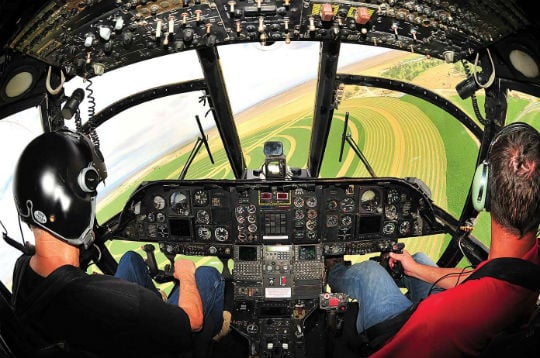
Bob Hawkins and Mike Arold in the cockpit during a training flight.
“Once we knew we won the auction, we immediately started to work on gathering and hiring qualified pilots and mechanics,” Alyssa Gaulke, Sky Aviation’s CH-46E project coordinator, told Vertical. “We were a bit flustered, not realizing we might have to move the aircraft so quickly. At this point we had not yet made any contacts within the CH-46 community. However, GSA informed us that we needed to get cleared by the DoD [Department of Defense] to own the aircraft and they could not be paid for — let alone moved — from the AFB until we had a fully certified End Use Certificate [EUC].” The company immediately got to work on its EUC, which was then finalized less than two months later, in May 2014.
“At this time we began asking about receiving copies of the maintenance manuals so we could start to get acquainted with the CH-46E,” Gaulke continued. “We were put in touch with various different Navy personnel and by the end of the process, I was working directly with NAVAIR [U.S. Navy Naval Air Systems Command] on our needs, having received a complement of manuals that cleared through their leadership and legal teams.”
With the EUC in hand, Sky Aviation began working with AMARG to get the CH-46s ready for removal. “AMARG is contracted by the Navy to remove any listed military use items not intended to be part of the sale, including armor, various anti-missile devices, etc.,” said Gaulke.
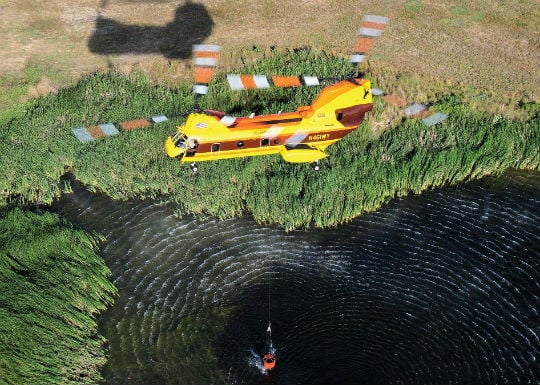
At this time, two CH-46E airframes are to be put into service.
Woodward and Hawkins, together with two pilots and two mechanics, then headed to Tucson. A few days earlier, all four CH-46s had been relocated to a local aircraft yard to have any maintenance completed before being test flown. Over the next two weeks, all four were brought to airworthy status, and after flight testing the first CH-46E, they flew it cross country to Sabreliner Aviation in Perryville Miss., for further repair, retrofitting, and repainting into its new company colors. (The other three CH-46Es were flown to Sky Aviation’s headquarters in Worland.) Sabreliner’s work included an initial inspection, followed by the various additional demilitarization and weight saving modifications required by Sky Aviation. They then installed the items that were needed to comply with U.S. Forest Service firefighting contracts. The aircraft received windshield defoggers, pulse lights, strobe lights, Garmin and FM Radios, and a civilian GPS system.
One unique item that needed manufacturing was a pilot door bubble window — required for long line firefighting and construction work. This needed to be designed, manufactured and certified, and was created by free form blowing — the benefit of this production technique is better clarity, but it has the drawback of causing conformity concerns, as each window is not exactly alike. However, the window’s engineering specifications have a built-in Federal Aviation Administration (FAA) -approved deviance, within which the manufacturer can produce acceptable windows.
A Whirlwind of Work
Gaulke said that while Woodward and Hawkins had taken government surplus aircraft through the type certification process before, they quickly discovered the process had changed quite significantly.
“From September through July 2014, it was a whirlwind of working with the FAA and Sabreliner Aviation to complete the type certificate,” said Gaulke. Sky worked through the Denver FAA office with Roger Caldwell, and a private advisor, Chip Adams. Meanwhile, Woodward and his brother Kelley worked diligently on creating a civilian log-keeping program for the new aircraft.

The past and the future: The Marines loved the CH-46E, Sky Aviation hopes to have similar success with the aircraft.
“Sabreliner Aviation did a great job on the aircraft, and on July 10, the aircraft finally headed home to Worland,” said Gaulke. “The final chapter to the type certificate process was getting our maintenance and training programs fully signed off by the FAA. We were very lucky to work with Greg Bourne, Chip Wood, and Steve Sorich, who came up from the Fort Worth Aircraft Evaluation Group to vet our maintenance and training programs. Currently we are in the process of finalizing the helicopter’s qualifications to be ready to fight fires on our Forest Service contract.”
According to Woodward, when Sky Aviation set out on this project, it was the CH-46’s exceptional service record with the Marines that persuaded them to take a risk on the aircraft. “Their performance and service record was a perfect match for filling a niche within the civilian world,” he said. “We are excited to give these helicopters a new life in the civilian world fighting fires and performing heavy lift jobs.”
The work the aircraft will do in the civilian sector will be much in keeping with their past work for the military — vertical transfers, firefighting and search-and-rescue. In the future, Sky Aviation will be running a weight reduction program to further streamline the aircraft. This will be accomplished by removing excess wires and other items that are no longer needed. “At some point, we anticipate having internal tanks for firefighting providing an alternative to using our Bambi Bucket,” said Woodward. “While the road from purchase to a fully realized type certificate was not always easy, we are excited for the opportunities that the 46s will bring our way.”
Sky Aviation’s first CH-46 is now getting primed for work with the U.S. Forest Service on a Call When Needed contract. It will fly with a crew of just two pilots — a crew chief is not required to be in the aircraft during flight — and it will utilize a 900-gallon Bambi Bucket with a load cell that will allow the pilot to load more or less water depending on conditions and weight requirements.
The CH-46 has already lived a long and exciting life as a Marine. It has been to war, cruised the oceans, and worked the presidential detail. With a new home in Worland, Wyo., it now awaits a new life of excitement, fighting fires and doing construction and other utility work. It’s a machine that could quite possibly live for a century.






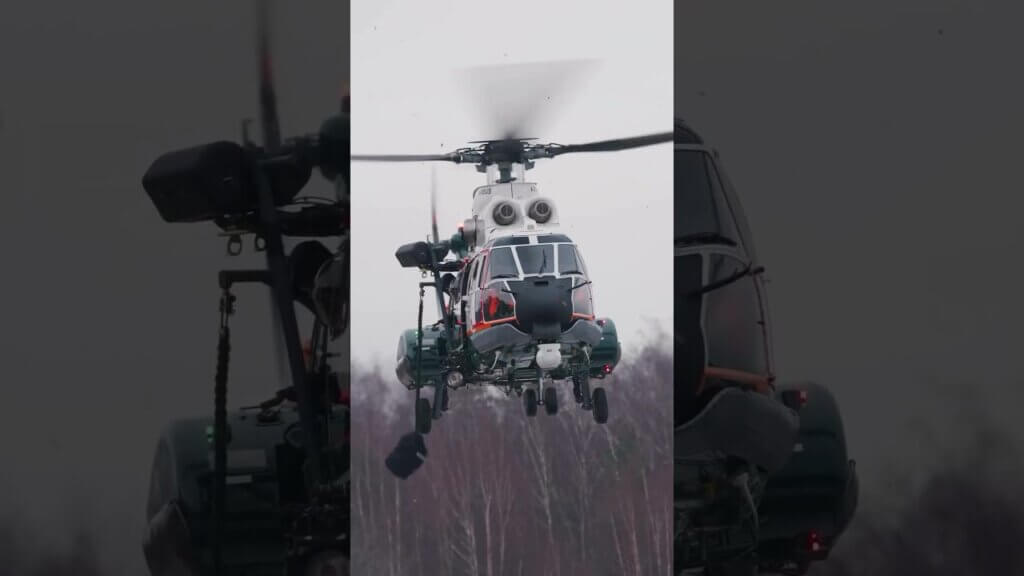
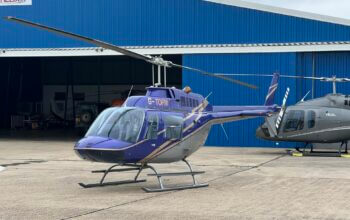
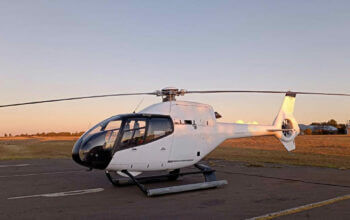

Served eight (8) years in the USMC (46 squadron/avionics), the last three and a half as a CH-46E crew chief/plane captain. I really miss the Sea Knight. Your company has acquired four really special birds.
what a great story. I am a great fan of the CH-46 helicopter. I am an aviation fan living in Sydney Australia. and I have been following some of these CH-46 on you to especially Columbia helicopters have quite a few of them, fact that they have been in service the early 60s is a great tribute to designer/builder’s. and what a wish Tom Woodward and Bob Hawkins all the best in their adventure.
I flew Phrogs in two wars (Desert Storm & Iraqi Freedom), and she always brought me home. Never realized how much I loved that aircraft until my wife told me how much SHE loved it for bringing me home all those times – in peace and in strife – at my retirement ceremony.